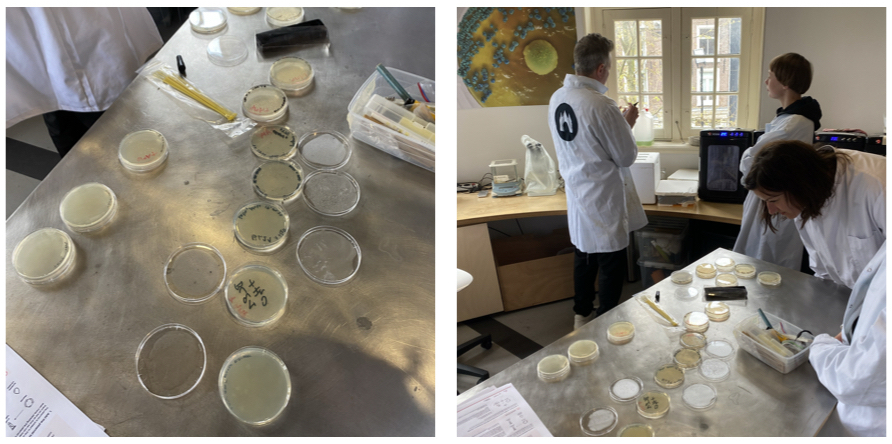Week 5
Biosensors and Soil Chromatography
Monday - E.coli biosensor with Tom Peeters + Matthijs de Block
Outline:
- What is a biosensor?
- How will we be using it today?
- Protocol + procedure
- Thoughts
We began this week learning from Tom, a biotechnology researcher focusing his research on yeasts, and Matthijs, a research-based artists who paricipate in past edition of BioHack. They have been collaborating for the last few years on projects that look at the intersection of yeasts and art.
Tom began by introducing the concept of a biosensor and the

Tuesday - Continuation of E.coli biosensor
- Due to an incompentance in the cells we used, the genetic modification of our E.coli didn’t work.

Wednesday - Soil Chromatography
Outline:
- What is soil chromatography?
- How and why is it used?
- How can I apply this to my own practise?
Hannah introduced us to Pfeiffer’s circular chromatography, or more commonly know as soil chromatography which is the process that shows the chemical, physical and biological characterisitcs of organic matter. This cost-effective method of understanding soil composition has been used by farmers, providing them a visual representation of their soil’s healthy and possible biological activity that might be taking place.

Thursday - Project Discussions + MDW Research
Outline:
- Discussions with Anne and Maarten
- Last week I felt strongly working with waste material, specifically ones with a presence of high calcium. I’ve been seeing a lot of eggshell based-composites across social media and at exhibitions that this inspired me to research what other raw materials have a high presence of calcium. I came across papers that focused on the biomineralisation of the shells as an inspiration for design, with a focus on human, social and environmental design.
When speaking to Anne and Maarten about it, they were encouraging of this idea of using the extracted powder from high calcium waste objects into ‘bioceramics’. Inspired by the Philippines’ use of oyster shells (from the placuna placenta mollusk) as a substitute for glass in windows, which is commonly known as Capiz windows, I wanted to explore how it would translate as a ceramic medium. The cultural significance of oyster shells paired with the potential that the chemcial properties hold is very enticing for me to pursue this project.
With Maarten, I spoke about how I felt challenged displaying projects that are still in process or simply integrating images of process into an exhibition. He recommended that while I was at Milan Design Week to look for how other process is shown. Do designers/brands/exhibitions show process? How do they do this and what components do they find important to include when portraying process?
- ISO @ MDW
- Do designers show their process? How do designers show their process? How do the components they include contribute to my understanding of their piece/body of work?
- I noticed that the majority of Milan Design Week was focused on commercialisied and luxury, interior and home furnishings companies in the larger districts. I was very happy with a lot of the work I came across at the Isola district and the Isola Design .
-
Takeaways from MDW

